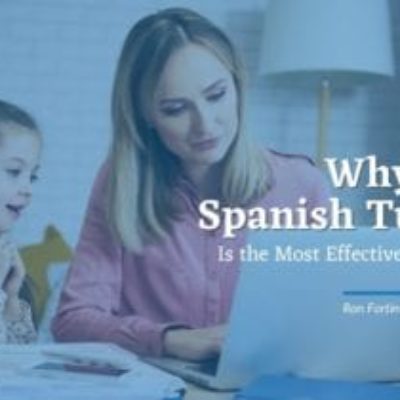
Have a Blast! 6 All-Time Favorite Spanish Icebreakers for School or Home
School is back in session. Kids are heading back to class, and teachers are putting together materials to get their students excited about Spanish. The challenge of getting kids to focus and work together after a summer of freedom is rough – especially in a foreign language! Luckily, Spanish icebreakers are here to save the day! They’re helpful, fun, engaging, and educational all in one.
What’s more, these icebreakers aren’t just for Spanish teachers to use.
Parents homeschooling their kids, parents looking to enrich their child’s education outside of public school, co-op leaders, and tutors can all take advantage of these games.
Let’s take a look!
Which Spanish icebreakers will you choose first?

1. Simon Says (Simón dice)
Level: A1-A2
Ages: Preschool-elementary
Who remembers Simon says from their childhood days? Yes! I’m sure most of you have played this at least a couple of times. This is one of the best Spanish icebreakers to use with energetic young kids who can’t sit still. Get them all up on their feet, either at their desks or in a circle, and give them commands in Spanish starting with Simón dice…
This game is perfect for kids who are Spanish beginners because you can do the action as you say the command, making it easy for them to connect the Spanish with its corresponding action. Introduce new vocabulary, phrases, and complex grammar in a very easy and fun manner. Here are some commands to get started:
Pónganse de pie – stand up
Salten — jump
Siéntense – sit down
Canten – sing
Bailen – dance
Griten – shout
Cállense – quiet down
Now, in the real Simon Says game, the kids only do what you say if it is prefaced with the phrase “Simon says.” If you give a command without saying ‘Simon says’ and some of the kids do the action, they are ‘out’ and have to sit down. However, in an immersion preschool Spanish class, explaining that rule may be a bit complicated. If you are comfortable with using English in the classroom, go ahead and explain that rule. However, it is completely fine to play it without that rule; the students are still learning through Spanish exposure.
If you want to step it up a bit, you can give them full sentences, like Pongan la hoja debajo del escritorio. (Put the paper under the desk). You can include more vocabulary applicable to your specific class with this method.
2. The Question Ball (La pelota de preguntas)
Level: A1-B1
Ages: Elementary – adults
You may have seen these balls in English; they are divided into different sections with a question in each one. However, for this Spanish icebreaker, it’s better if you make your own with vocabulary specific to your class’s age and level. Take a plain rubber ball or even a balloon and divide it into sections. In each one, write a question or a command (¿Cuál es tu animal favorito? – What is your favorite animal? Enumera cinco de tus comidas favoritas. – List five of your favorite foods.) and let the games begin!
Have your students sit in a circle and start off with an example. Toss the ball up, catch it, and read the question where your right thumb lands. Answer it in Spanish, then toss it to one of your students (or kids)! Use it as a teaching moment if they are struggling to answer correctly and enjoying getting to know each other better!
Would you like a free Spanish eBook for beginners?
Homeschool Spanish Academy’s free eBook for beginners called Weird & Wacky Spanish Stories for Beginners is best suited for A2 level and above, but it’s also perfect for A1 learners who wish to improve their fluency through reading. It’s fun for kids and adults! The book is chock full of silly and suspenseful stories, great pictures, and English-Spanish parallel text.

Get Your Free Copy of Weird & Wacky Spanish Stories for Beginners
Type in your name and email to get 6 weird, wacky, and super entertaining Spanish stories for you and your family! Enjoy a magazine-style eBook with pictures and English-Spanish parallel text. Start reading in Spanish today!
3. Conversation Time (Hora de conversar)
Level: A1-B2
Ages: Preschool – adult
Spanish icebreakers are a perfect way to begin a class, and this one will get the students engaged and teaches Spanish questions and answers implicitly – no writing required! Get everyone in a circle and grab a ball to toss between you all. If you are playing with complete beginners, you need to go slowly and repeat a lot! Take the ball and say Yo me llamo… and say your name. Toss it to a student and walk them through the sentence and have them say their name. Have them toss the ball back to you and repeat the sentence. Then, toss the ball to another student and walk them through the sentence.
Once they seem comfortable with that phrase, introduce the question ¿Cómo te llamas? Start with an example, saying both the question and answer, then toss it to a student asking them ¿Cómo te llamas. They need to respond in Spanish, then toss the ball to another student, asking them the question.
This is a great fun way to introduce new questions and phrases. It’s a way to introduce conversational phrases that doesn’t use a textbook or a whiteboard (you can later review the sentences on a whiteboard) that is more natural. Just remember to be patient with them!
4. Hot Potato (La papa caliente)
Level: A2-B1
Ages: Preschool – middle school
Of all the Spanish icebreakers, this one is the best known. Everyone knows how to play hot potato! Now we are adding a twist to the original icebreaker to get those little learners speaking Spanish! Get some music and a potato (or a ball, whiteboard eraser, etc.) and create a circle with your students. Turn on the music and start passing the potato. When you stop the music, the person holding the potato has to speak in Spanish.
Depending on what class you have, you can modify this to fit their level. For example, you can have them just say a short sentence about themselves, you can ask them a question in Spanish that they must answer in Spanish, or you can write a grammar/vocabulary element on the board that they must incorporate into a sentence. There are so many different ways to make this simple game a great learning activity and an icebreaker!
5. Two Truths and a Lie (Dos verdades y una mentira)
Level: A2-C2
Ages: Elementary – adults
You’ve probably played this one with your friends before, but it’s a great language-learning tool as well! It’s a super easy Spanish icebreaker. Each person prepares 3 sentences in Spanish: two that are true and one that is false. The students can either write these down and read them out loud, or this can be a strictly oral exercise. If you’re playing this with a class of students, it would be best to have them sit in a circle to make it more personal and conversational instead of a teaching setting.
After each student reads their three sentences, the class discusses which one is the lie. The student then reveals which was the lie. If you are using this with your kids, you can ask them to come up with sentences about their friends or something they’ve learned (a science or history topic) since you will most likely be able to easily guess the lie.
Turn on your creativity and re-enforce Spanish lessons with this icebreaker as well! Depending on what the students are learning and their language capabilities, you can ask them to include certain vocabulary and grammar in their sentences. For example, if they are learning the present perfect tense, then they would have to write each sentence using that tense. As the students’ language capability improves, they can say which one is a lie in Spanish instead of English.
For first-timers, they can discuss which is a lie all in English. With time, they can use Spanglish – “Oh, that was the mentira,” – and incorporate more and more Spanish as their vocabulary improves until they can respond completely in Spanish.
6. Mystery Words (Palabras misteriosas)
Level: A2-C2
Ages: Upper elementary – adults
This Spanish icebreaker requires a little bit more logical thinking, so I would suggest not playing it with preschoolers or kids just going into elementary school. On the whiteboard (or a piece of paper if you are doing this at home), write about ten different words that describe you or something about you. For example, you can write azul if you have blue eyes, or veintisiete if you are 27 years old.
The students can either work individually or in teams to come up with what these words are referring to. For beginning levels, use words they are familiar with and they can guess in English. As they progress, have them find the question in Spanish that you wrote the answer to. For instance, going back to our examples, the questions would be: ¿De qué color son tus ojos? ¿Cuántos años tienes?
This is a great exercise if you a new teacher wanting your students to get to know you a bit together. You can continue to use this activity throughout the year, asking the students to lead the exercise instead of you. Feel free to use harder vocabulary and grammar if your students are more advanced!
Get Started!
So, now you have six new icebreakers to use this school year! You can reuse them throughout the year since they don’t have to be JUST icebreakers. Feel free to alter these games to fit the needs of your classes or come up with your own!
If you are looking for ways to better your Spanish or provide additional Spanish material to your kids or students, sign up for a FREE online Spanish class! Our classes are live with native speakers, and they are a great supplemental source for any Spanish class! Learn more here!

Want more Spanish resources? Check these out!
- Keep Your Spanish Skills Sharp Over Summer Vacation
- All You Need to Know About Spanish as a Second Language
- Discover the Joy of Learning Spanish with Summer Fun Activities
- Are Bilingual Children More Likely to Experience a Speech or Language Delay?
- What Is An Umbrella School?
- The Best Homeschool Spanish Curriculum at HSA
- From Burnout to Balance: Creating a Healthy Happy Homeschool Routine
- Language Learning with Netflix: How to Use the Chrome Extension
- Ser Conjugation: Free Spanish Lesson, Quiz, Exercises, and PDF - January 18, 2023
- 20 Colombian Spanish Phrases You Definitely Want to Know - November 4, 2022
- Ir + a + Infinitive: The Near Future Tense in Spanish - September 28, 2022





Looking for a great icebreaker activity? This ready-to-print exercise includes 20 different interviews with different topics and ready-to-ask questions for your students and space to record responses. Perfect for partners! Great for Back to School time, activities after school breaks, coming back af